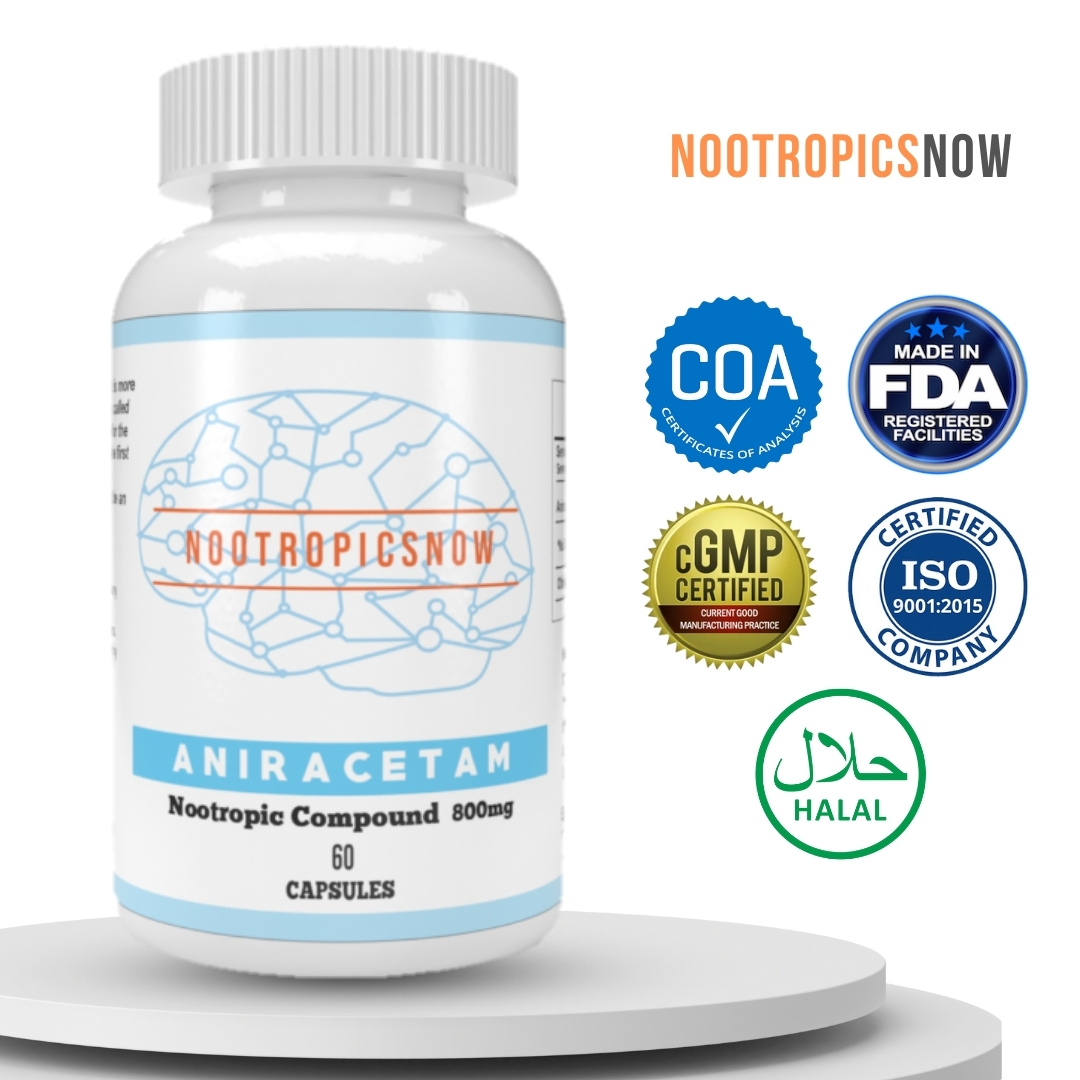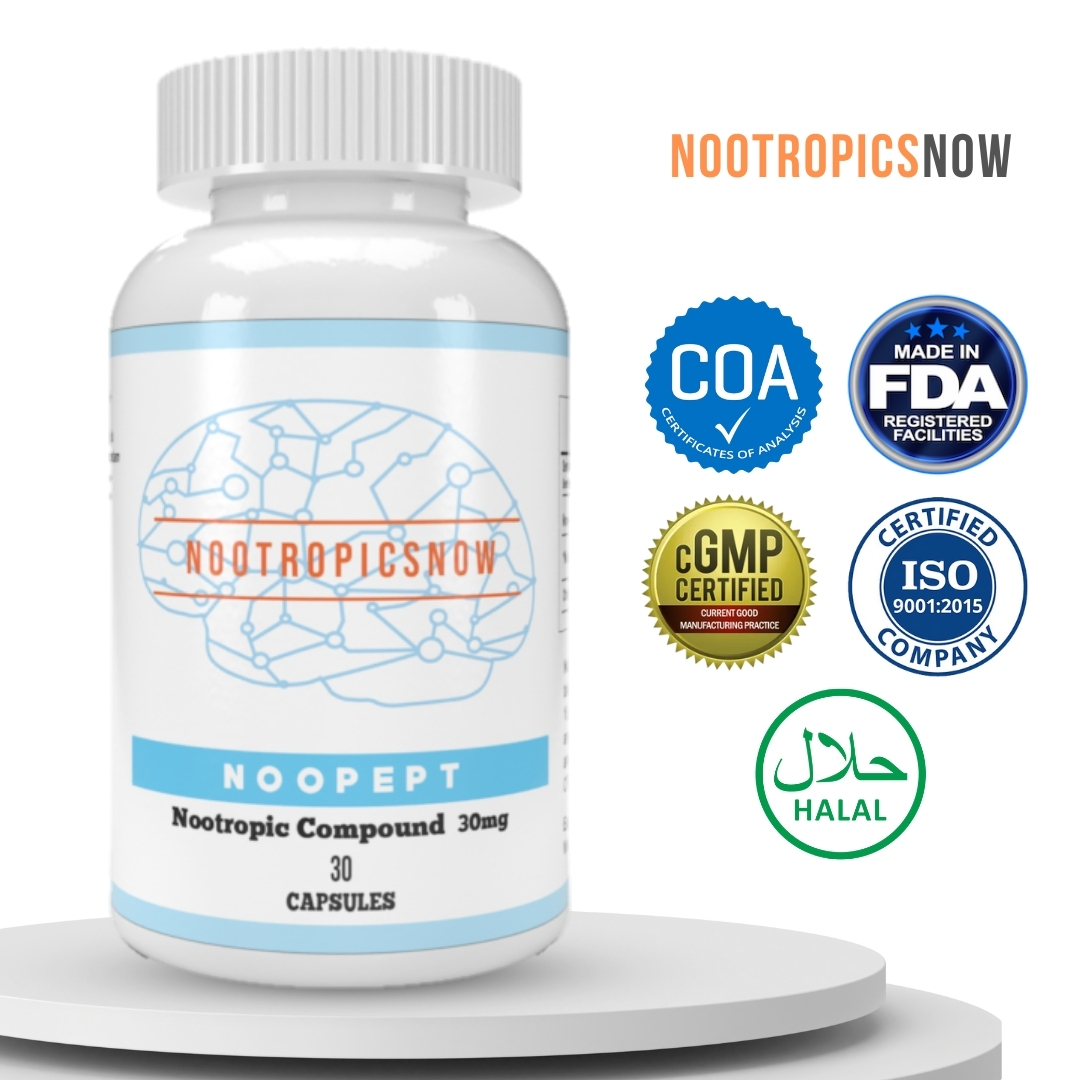Aniracetam Review: Benefits, Dosage & Side Effects

`markdown
Aniracetam: A Comprehensive Examination of Uses, Benefits, and Considerations
Introduction to Aniracetam
Aniracetam is a synthetic nootropic substance belonging to the racetam family, a group of compounds known for their cognitive-enhancing properties. Developed in the 1970s by Hoffmann-La Roche, Aniracetam is structurally similar to piracetam but possesses a higher potency and a broader range of effects. Its popularity stems from its purported ability to enhance memory, improve focus, reduce anxiety, and boost overall cognitive function. While it is available in some countries as a prescription medication, it is often used off-label or obtained as a research chemical. This article will delve into the various aspects of Aniracetam, including its mechanism of action, potential benefits, usage guidelines, safety considerations, and available research.
Unveiling the Mechanism of Action
Aniracetam’s cognitive-enhancing effects are attributed to its complex interactions with various neurotransmitter systems in the brain. Although the precise mechanism of action remains an area of ongoing research, several key pathways have been identified.
Exploring the Cognitive Benefits of Aniracetam
Aniracetam is primarily used for its potential cognitive-enhancing effects. Many users report improvements in various cognitive domains, including:
Investigating the Therapeutic Applications
While Aniracetam is primarily used as a cognitive enhancer, it has also been investigated for its potential therapeutic applications in various neurological and psychiatric conditions. Some areas of research include:
Guidelines for Aniracetam Usage
When considering Aniracetam, it is crucial to follow certain guidelines to ensure safety and maximize its potential benefits.
Navigating Safety Considerations and Potential Side Effects
Aniracetam is generally considered safe, but like any substance, it can cause side effects in some individuals. Common side effects include:
Reviewing Available Research and Studies
While anecdotal evidence suggests that Aniracetam is a potent cognitive enhancer, scientific research on its effects is limited. However, several studies have investigated its potential benefits:
Stacking Aniracetam with Other Nootropics
Many users combine Aniracetam with other nootropics to enhance its cognitive effects. This practice, known as “stacking,” involves combining two or more substances to achieve synergistic benefits. Some popular Aniracetam stacks include:
Conclusion: Weighing the Evidence on Aniracetam
Aniracetam is a popular nootropic substance known for its potential cognitive-enhancing effects. While anecdotal evidence and some scientific research suggest that it can improve memory, focus, learning, and mood, more research is needed to confirm these findings and determine its long-term safety and efficacy. When considering Aniracetam, it is crucial to consult with a healthcare professional, start with a low dose, and monitor for any potential side effects. By following these guidelines, individuals can make informed decisions about whether Aniracetam is right for them. The compound also shows considerable promise for future research avenues into various cognitive disorders such as Alzheimer’s, however further investigation is needed.
`
Aniracetam: A Deep Dive into Uses, Benefits, and Research
Aniracetam is a synthetic nootropic belonging to the racetam family, a group of compounds known for their cognitive-enhancing properties. Developed in the 1970s by Hoffmann-La Roche, Aniracetam has been investigated for its potential to improve memory, focus, and overall cognitive function. Although it is not approved by the FDA for medical use in the United States, it is available in other countries and is often used off-label by individuals seeking cognitive enhancement. This section examines the mechanisms, uses, effects, and research surrounding Aniracetam.
Chemical Structure and Properties
Aniracetam, chemically known as 1-p-anisoyl-2-pyrrolidinone, is an off-white to light yellow crystalline powder. It is a derivative of piracetam, the first nootropic in the racetam family. However, Aniracetam is considered to be more potent than piracetam, with some studies suggesting that it is several times more effective at enhancing cognitive function. Its molecular formula is C12H13NO3, and it has a molecular weight of 219.24 g/mol.
Primary Mechanisms of Action
Aniracetam influences multiple neurotransmitter systems in the brain. These effects contribute to its cognitive-enhancing and mood-modulating properties.
Acetylcholine Enhancement
Firstly, Aniracetam enhances the activity of acetylcholine, a critical neurotransmitter for learning, memory, and attention. It appears to achieve this by increasing the release of acetylcholine from neurons. This enhancement may explain the improved memory and learning observed in studies involving Aniracetam. Additionally, by modulating cholinergic neurotransmission, Aniracetam can improve overall cognitive processing speed and efficiency.
Glutamate Modulation
Secondly, Aniracetam modulates the glutamatergic system, particularly by interacting with AMPA receptors. AMPA receptors are crucial for synaptic plasticity, which is the ability of synapses to strengthen or weaken over time in response to increases or decreases in their activity. By potentiating AMPA receptor activity, Aniracetam may enhance long-term potentiation (LTP), a key process in memory formation.
Neurotransmitter Release
Aniracetam influences the release and reuptake of various neurotransmitters, including dopamine and serotonin. These neurotransmitters play critical roles in mood regulation, motivation, and attention. For example, an increase in dopamine levels may contribute to improved focus and motivation, while changes in serotonin levels could lead to enhanced mood and reduced anxiety.
Sigma Receptor Activation
Furthermore, Aniracetam activates sigma receptors, which are implicated in various neurological processes, including neuroprotection and modulation of neurotransmitter systems. Activation of sigma receptors may contribute to the neuroprotective effects of Aniracetam, helping to shield neurons from damage and promote neuronal survival.
Cognitive Benefits of Aniracetam
Aniracetam offers a range of cognitive benefits, making it an attractive option for individuals seeking to enhance their mental performance. These benefits have been demonstrated in both clinical studies and anecdotal reports from users.
Memory Improvement
A primary benefit of Aniracetam is its ability to improve memory, particularly in individuals with cognitive impairment. For example, studies have shown that Aniracetam can enhance both short-term and long-term memory, making it easier to recall information and learn new tasks. This memory-enhancing effect is likely due to its influence on acetylcholine and glutamate neurotransmission, which are crucial for memory consolidation and retrieval.
Enhanced Focus and Concentration
Secondly, Aniracetam can improve focus and concentration, making it easier to stay on task and maintain attention. This effect is particularly beneficial for individuals who struggle with attention deficits or who need to perform tasks that require sustained mental effort. The enhanced focus may be attributed to the modulation of dopamine levels and the overall improvement in cognitive processing speed.
Improved Learning Capacity
Aniracetam enhances learning capacity, facilitating the acquisition of new skills and information. This effect is particularly valuable for students, professionals, and anyone seeking to improve their cognitive abilities. The improved learning is likely linked to the enhancement of synaptic plasticity and the overall improvement in cognitive efficiency.
Mood Enhancement
In addition to its cognitive benefits, Aniracetam can improve mood and reduce anxiety. This is due to its influence on serotonin and dopamine levels, which play crucial roles in mood regulation. Studies have indicated that Aniracetam can have anxiolytic effects, making it helpful for individuals dealing with stress, anxiety, or mood disorders.
Aniracetam Research and Clinical Studies
Several studies have investigated the effects of Aniracetam on cognitive function and various neurological conditions. These studies provide valuable insights into its potential benefits and limitations.
Studies on Alzheimer’s Disease
Some research has explored the effects of Aniracetam on individuals with Alzheimer’s disease. While not a cure, Aniracetam has shown promise in improving cognitive function and reducing some of the symptoms associated with the disease. For example, some studies have reported improvements in memory, attention, and overall cognitive performance in patients taking Aniracetam. However, it’s essential to note that the results have been mixed, and further research is needed to confirm these findings.
Studies on Cognitive Impairment
Additionally, research has examined the effects of Aniracetam on individuals with other forms of cognitive impairment, such as age-related cognitive decline and vascular dementia. These studies have generally shown positive results, with Aniracetam improving memory, attention, and overall cognitive function. The benefits appear to be more pronounced in individuals with more severe cognitive deficits.
Studies on Healthy Individuals
Furthermore, some studies have explored the effects of Aniracetam on healthy individuals seeking cognitive enhancement. These studies have been less consistent, with some reporting improvements in memory and attention, while others have found no significant effects. It’s possible that the effects of Aniracetam are more subtle in healthy individuals compared to those with cognitive impairment.
Meta-Analyses and Reviews
Meta-analyses and systematic reviews of the available research have provided a more comprehensive assessment of the efficacy of Aniracetam. These analyses have generally concluded that Aniracetam has the potential to improve cognitive function, particularly in individuals with cognitive impairment. However, they also emphasize the need for further high-quality studies to confirm these findings and to determine the optimal dosage and duration of treatment.
Dosage and Administration Guidelines
Proper dosage and administration are essential for maximizing the benefits of Aniracetam while minimizing potential side effects. Here are some guidelines to consider:
Standard Dosage
The standard dosage of Aniracetam ranges from 600 to 1500 mg per day, typically divided into two or three doses. Many users start with a lower dose (e.g., 600 mg per day) and gradually increase it as needed to achieve the desired cognitive effects.
Timing
It’s best to take Aniracetam with meals, as it is fat-soluble and better absorbed when taken with fats. Spreading the daily dose throughout the day can help maintain consistent levels of the drug in the bloodstream and reduce the risk of side effects.
Cycling
Some users recommend cycling Aniracetam, meaning taking it for a period of time (e.g., several weeks or months) followed by a break. This may help prevent tolerance and maintain the drug’s effectiveness over time.
Stacking
Additionally, Aniracetam is often stacked with other nootropics to enhance its effects. Common stacks include Aniracetam with choline sources (such as Alpha GPC or CDP-Choline) to support acetylcholine levels and with other racetams for synergistic effects.
Potential Side Effects and Safety
Aniracetam is generally considered safe and well-tolerated, but like any drug, it can cause side effects in some individuals.
Common Side Effects
Common side effects include headaches, nausea, anxiety, and insomnia. These side effects are usually mild and temporary and can often be mitigated by adjusting the dosage or timing of administration.
Rare Side Effects
Rarely, more severe side effects can occur, such as allergic reactions, changes in blood pressure, and mood disturbances. If any severe side effects occur, it’s essential to discontinue use and seek medical attention.
Interactions
Aniracetam may interact with other medications or supplements, particularly those that affect neurotransmitter levels or blood clotting. It’s crucial to consult with a healthcare provider before taking Aniracetam, especially if you are taking other medications or have underlying health conditions.
Precautions
Finally, Aniracetam is not recommended for pregnant or breastfeeding women, as its effects on fetal development and infants are not well-known. It should also be used with caution in individuals with liver or kidney problems, as these conditions can affect drug metabolism and excretion.
User Experiences and Reviews
User experiences and reviews can provide valuable insights into the real-world effects of Aniracetam. These anecdotal reports can offer a more nuanced understanding of the drug’s benefits, side effects, and optimal usage strategies.
Online Forums
Online forums and communities dedicated to nootropics often feature detailed discussions about Aniracetam. Users share their experiences, dosages, stacks, and any side effects they have encountered. This information can be helpful for individuals considering trying Aniracetam, as it provides a range of perspectives and practical tips.
Positive Reviews
Many users report positive effects from Aniracetam, including improved memory, enhanced focus, reduced anxiety, and mood enhancement. Some users describe feeling more mentally clear, productive, and motivated.
Negative Reviews
However, not all users experience positive effects. Some report no noticeable benefits, while others experience side effects such as headaches, nausea, or anxiety. It’s important to note that individual responses to Aniracetam can vary widely, and what works well for one person may not work for another.
Caveats
While user reviews can be informative, it’s essential to approach them with caution. Anecdotal reports are not a substitute for scientific evidence, and individual experiences may be influenced by factors such as placebo effects, expectations, and other lifestyle variables.
Legal Status and Availability
The legal status and availability of Aniracetam vary depending on the country. In the United States, Aniracetam is not approved by the FDA for medical use, but it is legal to purchase and possess as a dietary supplement. However, it cannot be marketed as a drug or treatment for any medical condition.
You can check out available Aniracetam products from trusted vendors online:

View Product
International Status
In other countries, Aniracetam may be available as a prescription medication or as an over-the-counter supplement. The specific regulations vary depending on the country’s laws and regulations regarding pharmaceuticals and dietary supplements.
Online Retailers
Aniracetam can be purchased from various online retailers that specialize in nootropics and dietary supplements. It’s essential to choose reputable vendors that offer high-quality products and provide transparent information about their sourcing and manufacturing processes.
Quality Control
When purchasing Aniracetam online, it’s important to check for third-party testing and quality control certifications. These certifications indicate that the product has been tested for purity, potency, and contaminants.
Conclusion: Is Aniracetam Right for You?
Aniracetam is a promising nootropic with the potential to improve cognitive function, enhance mood, and provide neuroprotective benefits. While it is generally considered safe and well-tolerated, it’s essential to approach its use with caution and to consult with a healthcare provider before starting any new supplement regimen.
Key Considerations
If you are considering trying Aniracetam, it’s important to do your research, understand the potential benefits and risks, and to start with a low dose to assess your tolerance. It’s also essential to choose high-quality products from reputable vendors and to monitor your response closely.
Future Research
Further research is needed to fully understand the effects of Aniracetam on cognitive function and various neurological conditions. Well-designed clinical trials with larger sample sizes and longer durations are needed to confirm its efficacy and to determine the optimal dosage and treatment strategies.
Personal Assessment
Ultimately, the decision of whether or not to use Aniracetam is a personal one. Weigh the potential benefits against the potential risks, consider your individual circumstances and health status, and consult with a healthcare provider to make an informed decision. By taking a thoughtful and responsible approach, you can determine whether Aniracetam is a suitable option for enhancing your cognitive function and overall well-being.





